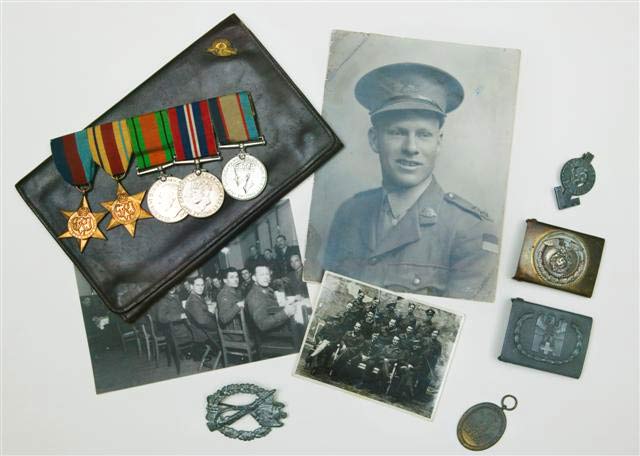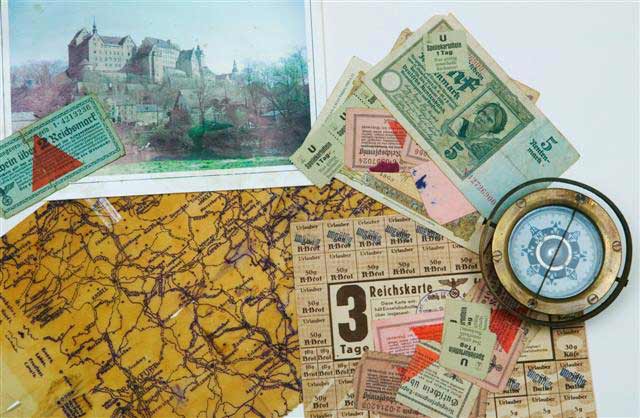Colditz Collection
Escape maps, medals and military insignia from an infamous German prisoner of war camp are among the latest additions to the Australian War Memorial's collection.

The items belonged to WA-born Lieutenant JR 'Jack' Millet who enlisted in 1940 with 2/11 Infantry Battalion. He served in the Middle East before being captured by the Germans on Crete in May 1941.
After several escape attempts, Millet was sent to Oflag IV-C, the 'escape-proof' high security prisoner of war camp for officers popularly known as 'Colditz'.
Millet was famed for producing high quality escape maps, essential documents for allied prisoners trying to escape from occupied Europe. He was one of approximately 20 Australians interned at Colditz. The last survivor of that group, he died in Perth in 1999.

Millet's Colditz collection includes medals, photographs of himself with other Australian and allied prisoners in Colditz, several hand drawn escape maps, and a key he manufactured to give prisoners access to the German food store in the camp.
The new additions are significant for the Memorial's collection. Although there is considerable material held on prisoners of the Japanese, items relating to Australians captured in Europe and the Middle East are much less common.
The Axis powers in Europe (Germany and Italy) captured 8,591 Australian personnel during the Second World War, moving them to camps in Germany, Austria or Poland.
Lieutenant Jack Milett
Lieutenant John (Jack) Robert Millett was born in 1912 in Olive Street, Subiaco. Shortly after his birth, his family moved to York for ten years, before moving again to Leederville.
In 1927 Jack began working for General Motors in Cottesloe assembling cars and studying blacksmithing, carpentry, mechanics, and (in what would later be very important) technical drawing.
During the depression, Jack and his father traveled to the Pilbara region's goldmines. Jack then returned to Perth as a panel beater; joining the Army Reserves in 1937 and marrying Irene Cary in 1938.
Jack sailed from Fremantle as a Lieutenant in the 2nd/11th unit in 1940. He first saw action in the Western Desert in the initial attack on Tobruk and then at Derna and Gazi before being shipped to Greece, where he was captured in the fall of Crete.
Jack was taken to a prisoner of war camp where he provided detailed maps to escapees in a large-scale tunnel break out. He was identified as a ring-leader by the Germans, and moved to Colditz with other escapees, including ten other Australians. At Colditz, Jack continued to help with maps, and his reputation as the 'map maker of Colditz' is documented in various publications, most notably The Diggers of Colditz by Jack Champ and Colin Burgess.
Jack Millett passed away in December 1999.